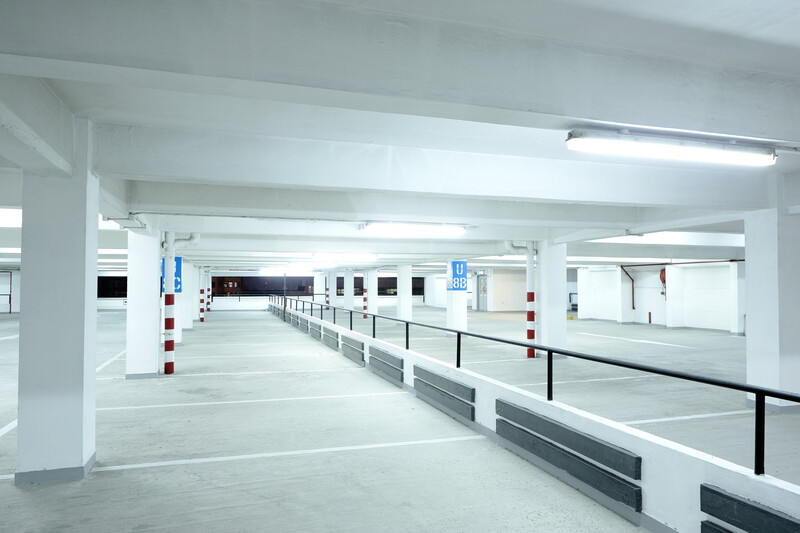
Building a Car Park – How to Specify Ground Work
Designing and constructing a parking lot can be a difficult and time-consuming task. When building a car park, there are various factors to consider. Therefore we’ve put up a guide that covers all of the important points. Whether you want to improve foot traffic, make your business more accessible, or accommodate more customers, this helpful guide is a great place to start. Professionals such as IBX consultant geotechnical services can also help you with any queries.
Building a car parking plan
You’ll need to arrange the layout and design of your parking lot before building begins. Your new car park’s design will be largely determined by the intended usage, location, and available space. If you’re constructing a car park for a school, a surface level car park may be appropriate; but, if you’re designing a car park for a shopping centre, a multi-story or subterranean car park may be more appropriate.
There is no one-size-fits-all solution for car park design, construction, or expenses. There are some standard standards to keep in mind so that your visitors can park easily.
– Car spots must be 2.4 metres by 4.8 metres in size.
– Light vans require parking spaces that are 2.4 metres by 5.5 metres and are metered.
– Lorries and heavy vehicles will require a space of 3.5 metres by 18.5 metres.
– Parking spaces for coach cars will need to measure 3.5 metres by 14 metres.
Building a car park
You can start constructing your car park once your drawings have been finalised and authorised.
Building car park boundaries
It is critical to properly identify the borders of your land for any type of vehicle park. A metal or concrete façade can readily be used for multi-story parking garages. You can be more inventive with surface-level parking lots. To define the limits of your parking lot, consider adding fencing, hedges, bollards, or even grass ditches. Make sure you post clear signage so that visitors understand where your parking rules apply.
Paving
Paving Concrete is the most common material used in car parks, and with good reason: it is a low-cost, long-lasting, and low-maintenance material. When properly installed, it can readily endure the traffic in your parking lot. Curing the paving with treatment sprays will make it even more durable.
When establishing the foundation for your parking lot, make sure the concrete is level and even to eliminate weak spots that could crack or develop potholes. To ensure that your parking lot is properly paved, you must do so under the appropriate weather conditions. You should ideally pave your parking lot when the weather is dryer and milder.
After you’ve paved your parking lot, make sure to keep vehicles off of newly paved sections for at least three days in the summer and seven days in the winter to allow the paving and concrete to cure.
You’ll also need to think about the thickness of your paving. Adapt it to fit the types of cars that will be using your parking lot. For cars and light vans, 4-inch thick asphalt is good. You’ll need 5 to 6 inches thick tarmac if you’re accommodating larger vehicles.
CBR Testing
CBR testing will be needed.
The pressure required to penetrate a soil sample with a standard area plunger is measured in the CBR test. The pressure measured is then divided by the pressure necessary to penetrate a normal crushed rock material at the same depth. The higher the CBR rating, the harder the surface. Clay has a CBR value of 2%, but certain sands may have a CBR value of 10%. A high-quality sub-base will have an 80-100 percent worth (maximum).
The CBR test is performed on soils with a particle size limit of 20mm. (Please read Plate Bearing Tests for material greater than 20mm.) The method entails pushing a small cylindrical plunger (about 50mm) into the ground at a consistent rate, with a four-wheel-drive vehicle acting as the response load.
In most cases, tests are conducted at surface level or at depths of 500-1000mm in 20-30m intervals along the intended construction centreline. Each site is normally subjected to a minimum of three tests.
Construct your foundation
You’ll need to construct walls and supports for each level of multi-story, split-level, or underground parking. The thickness of your paving will determine the spacing of your structural joints.
Your joints should be a maximum of 10 feet apart for paving that is 4 inches thick, 12.5 feet for 5-inch thick paving, and 15 feet for 6-inch thick paving. Taking the time to properly lay your joists will ensure that your car park is robust and can support the weight of several vehicles.
Costs
The cost of building a car park is determined by the size of the parking lot, the materials used, and the number of additional features such as cameras, ticket machines, and lighting. When planning your car park budget, keep in mind how much money you’ll need to invest to keep your new facility complying with your local council’s safety standards and recommendations. This could save you money in the long run while also protecting the safety of your visitors that utilise your parking lot.